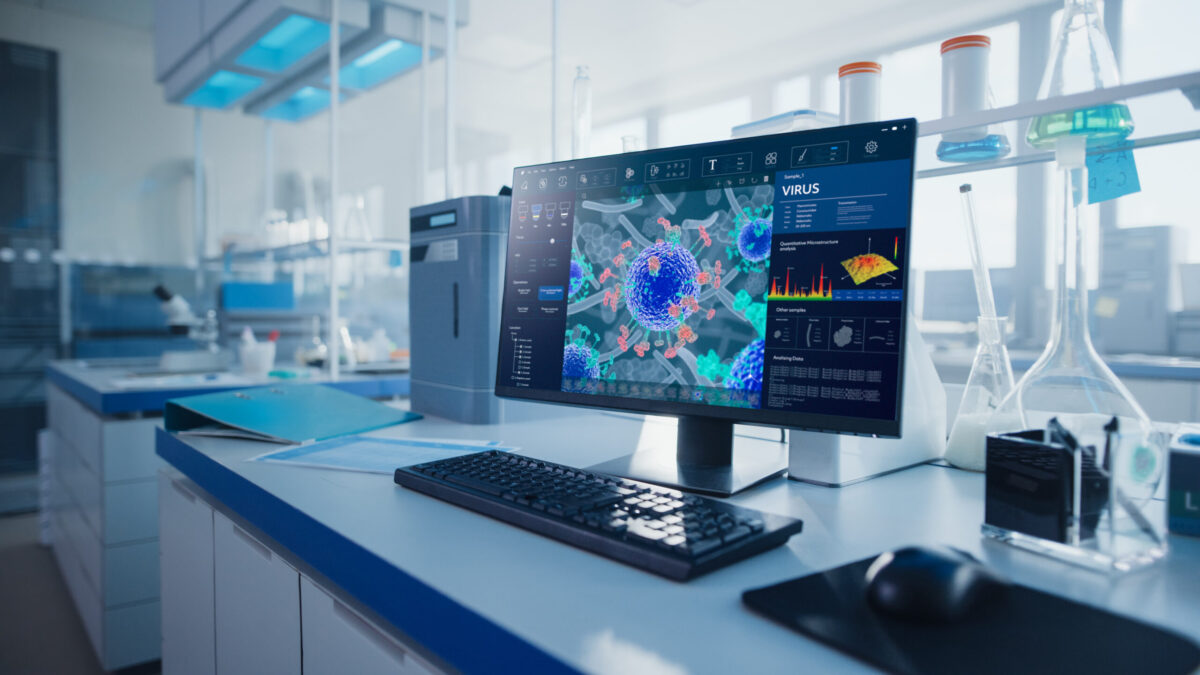In a world where traditional drug development takes up to 15 years, artificial intelligence is now helping scientists find treatments in a fraction of the time. This article explores the latest advances in AI-driven drug discovery and how they’re transforming the future of medicine and biotechnology.
The process of discovering a new drug has long been described as slow, expensive, and highly uncertain. From identifying a potential molecule to getting it approved for human use, the timeline typically spans over a decade and costs upwards of $2.5 billion per drug. But that model is now being upended. At the intersection of biotechnology and artificial intelligence, a powerful new frontier has emerged—one where machines help scientists identify, simulate, and test drug candidates at unprecedented speed.
In early 2025, a major milestone was quietly reached. A small biotech firm, in collaboration with a leading AI lab, submitted a drug candidate for phase I clinical trials—just 18 months after initial modeling began. The candidate was discovered, screened, and optimized almost entirely through AI.
This isn’t science fiction. It’s the future of pharmaceuticals, and it’s already here.
The Traditional Bottlenecks
To understand how transformative AI is, it’s helpful to see what it’s replacing.
In traditional drug discovery, scientists follow a linear path: identify a biological target, screen hundreds of thousands of molecules manually or semi-automatically, test the most promising ones in lab dishes and animals, then optimize the compound through countless iterations before clinical trials even begin.
Roughly 90% of drug candidates fail during this process.
Enter Artificial Intelligence
AI changes this model dramatically. Instead of brute-force experimentation, AI uses machine learning and deep neural networks to predict which molecules are likely to interact with specific biological targets.
Some of the biggest innovations include:
Generative models that design new molecular structures from scratch.
Predictive modeling to estimate a drug’s toxicity, bioavailability, and side effects.
Digital twins of human cells, used to simulate how a compound will behave before it’s ever synthesized.
These techniques reduce not just time and cost—but also failure.
Who’s Leading the Charge?
Several companies and research institutions are now defining the field:
Insilico Medicine recently announced the first AI-designed small molecule to reach clinical trials for idiopathic pulmonary fibrosis. The drug was developed in under 30 months.
DeepMind, famous for AlphaFold, released AlphaFold 3 in 2024. This system predicts the structure of protein-protein and protein-DNA complexes, a critical step for drug targeting.
Recursion Pharmaceuticals is using AI to analyze cell images and extract features invisible to human researchers, unlocking new pathways for drug targeting.
Big pharma isn’t sitting still either. Pfizer, Roche, Novartis, and AstraZeneca have all announced multibillion-dollar AI partnerships in 2023–2025.
Real-World Results
The proof is in the results. In January 2025, a collaborative study between MIT and Moderna used AI models to predict optimal mRNA sequences for vaccine design, reducing lead time for preclinical vaccine candidates by 70%.
In oncology, several AI-discovered compounds have already moved to human trials. While not yet FDA-approved, they show promise in targeting aggressive cancers with more precision and fewer side effects.
AI Is Also Democratizing Drug Discovery
In the past, only billion-dollar labs could afford massive compound screening systems. But with cloud-based AI platforms and open-source molecular datasets, even small startups and university labs can now compete.
New AI-driven platforms like Atomwise, BioSymphony, and ChemAI offer virtual compound libraries and simulation-as-a-service tools for under $1,000/month—levels unimaginable five years ago.
The Ethical Frontier
However, rapid acceleration brings risk.
What happens if someone uses generative drug models to create a biochemical weapon? Or markets a drug without proper testing, relying too heavily on AI predictions?
Regulators are scrambling to catch up. The FDA launched a dedicated AI task force in late 2024, and the EU’s EMA has begun defining a “trustworthy AI in pharma” framework, requiring transparency, auditability, and human oversight for all AI-based drug development pipelines.
What It Means for Patients
The practical result is simple: faster cures.
Rare diseases that previously had no economic incentive for research may now get treatments, thanks to AI’s cost-efficiency. Personalized medicine, where drugs are tailored to your genetic profile, becomes much more feasible with predictive modeling.
The dream of curing diseases faster, cheaper, and more effectively is no longer just a dream. It’s a work in progress—and AI is accelerating it every step of the way.
Source: Nature Biotechnology (February 2025), MIT Computational Health Journal, DeepMind AlphaFold Research Team, Insilico Medicine White Paper (2024), FDA AI Task Force Brief (2025).

